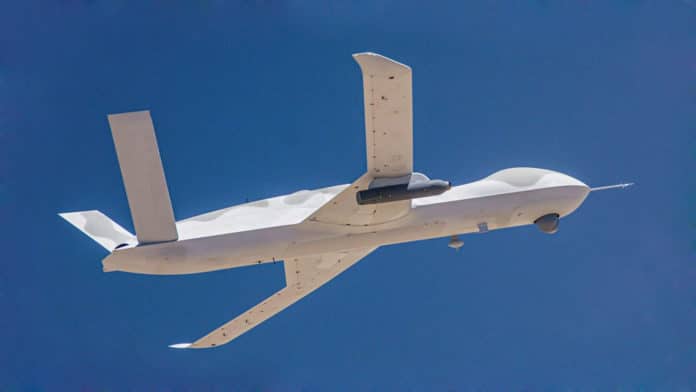The American company General Atomics Aeronautical Systems, Inc. (GA-ASI) has tested an Avenger Unmanned Aircraft System equipped with a Lockheed Martin Legion Pod to autonomously track and follow targets of interest, for the first time. The demonstration over the high desert of southern California on July 2, 2021, was described as a step closer to gaining autonomous systems that support manned-unmanned teaming (MUM-T) in joint all-domain operations.
Military fighter aircraft are usually fitted with air-to-air targeting radars to track and target enemy aircraft – even a drone. This is extremely effective, but there are several factors that may affect radar performance. For example, there may be large clutter echoes, unintentional interfering signals from other “friendly” transmitters for radar to operate properly, or hostile forces might be using radar jamming systems.
Legion Pod is a multi-function sensor system that supports collaborative targeting operations in radar-denied environments. Housed in a 16-inch diameter structure, the Pod’s baseline configuration includes an IRST21 sensor and advanced processor for high-fidelity detection and tracking of air-to-air targets. The system has already flown with the F-16 and F-15C fighter aircraft, successfully demonstrating its detection and tracking capabilities in representative threat environments.
Designed for flexibility, Legion Pod accommodates additional sensors within its current structure, acting as a simultaneous sensor suite without costly aircraft or system modifications. Thanks to this, it was possible to install Legion Pod software into the Avenger Mission Management System (MMS) in less than three months and was enabled through the Open Mission Systems (OMS) message standards. This OMS demonstration proves that existing operating systems can be rapidly integrated across platforms with minimal cost.
During the flight, Legion Pod’s infrared search and track system detected multiple fast-moving aircraft operating in the area and transmitted target tracking information to the drone’s avionics system. The autonomy prioritized the targets informing Avenger maneuvers for target engagement.
“This flight demonstrates a critical sensor capability that enables unmanned combat air vehicles like the Avenger to operate autonomously in Joint All-Domain Operations,” said Dave Belvin, vice president of Sensors and Global Sustainment at Lockheed Martin. “We designed Legion Pod to passively detect and track targets for tactical fighter pilots in radar-denied environments. This capability provides the data necessary to enable unmanned vehicles to track and engage hostile airborne targets without human intervention.”
